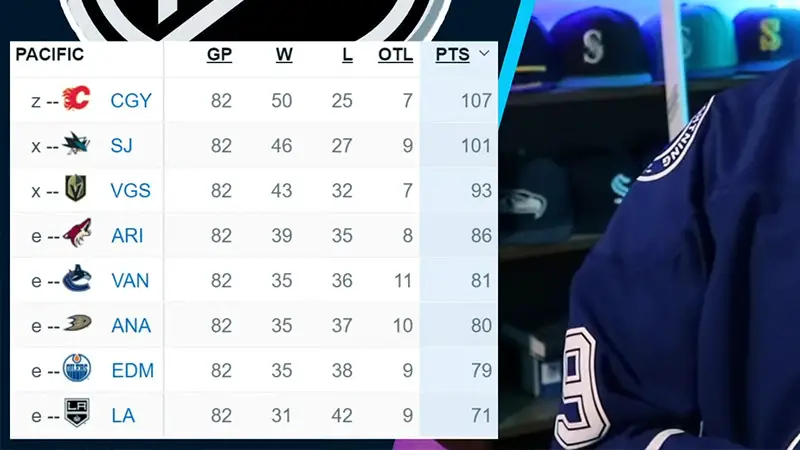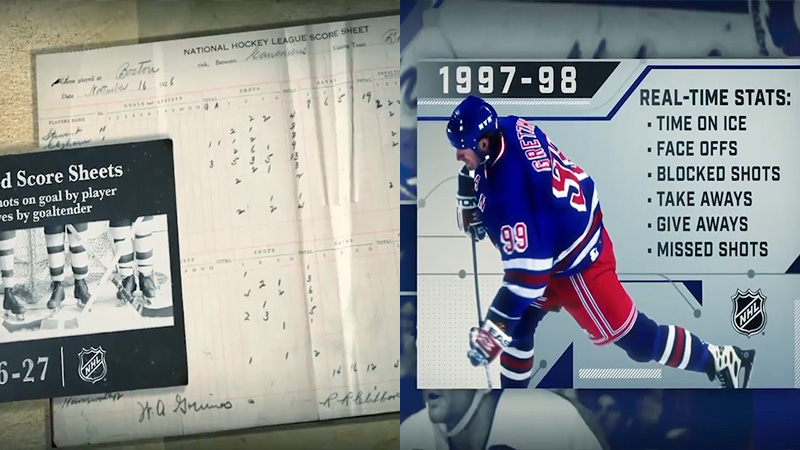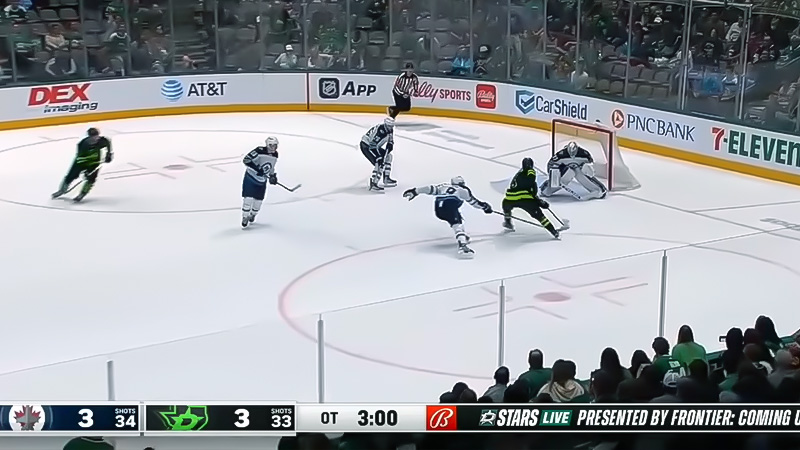In the fast-paced world of professional ice hockey, every goal, assist, and win counts, but understanding how those points translate into team standings and playoff qualifications can be a bit of a maze.
That’s where the NHL Point System steps in—a rulebook of its own, shaping the trajectory of each team’s season and ultimately determining who gets a shot at the Stanley Cup.
In this blog post, we’ll dissect the intricacies of this point system, breaking down the different ways teams can accumulate points during the regular season.
From regulation wins to overtime nail-biters and shootout showdowns, we’ll explore the rules that keep hockey fans on the edge of their seats and players fighting until the final buzzer.
So, if you’ve ever wondered how those numbers on the scoreboard add up, join us on this journey through the NHL Point System.

What Is an NHL Point System?
The NHL (National Hockey League) point system is used to determine team standings and playoff eligibility. In this system, teams earn points based on the outcome of their games.
A win typically earns a team two points, while a loss in regulation earns zero points.
If a game ends in a tie after regulation, both teams usually receive one point, and an additional point is awarded to the team that wins in overtime or a shootout.
This system encourages competitive play and allows teams to accumulate points over the regular season.
Points play a crucial role in determining a team’s rank within their division or conference, ultimately influencing playoff qualification.
The NHL point system helps track team performance and adds excitement to the regular season.
The Basics of NHL Scoring
In the NHL (National Hockey League), scoring is a fundamental aspect of the game, with the primary objective being to outscore the opposing team. Here are the basics of NHL scoring:
Goals
The most common way to score in hockey is by putting the puck into the opposing team’s net. Each goal scored is worth one point on the scoreboard.
Assists
Players are also rewarded for setting up goals. When a player passes the puck to a teammate, and that teammate scores, the player who made the pass is credited with an assist.
Assists do not count as points on the scoreboard but are tracked as a statistic to recognize a player’s contribution to a goal.
Points
A player’s total points are the sum of their goals and assists. Points are often used to gauge a player’s offensive contribution.
Hat-Trick
When a player scores three goals in a single game, it’s called a “hat-trick.” This is a significant achievement and a notable scoring feat.
Power Play and Penalty Shot Goals
Special situations, like power plays (when the opposing team has a player in the penalty box) and penalty shots, can result in goals that count toward a player’s and team’s scoring.
Overtime and Shootout Goals
In regular-season games, if the score is tied at the end of regulation time, overtime and shootout goals can determine the winner. These goals count toward a player’s and team’s scoring.
Empty Net Goals
When the opposing team pulls their goalie in favor of an extra skater to try to score, an empty net may result. If a player scores into the empty net, it counts as a goal.
Game-Winning Goals
The player who scores the goal that puts their team ahead in the score and ultimately leads to the victory is credited with a game-winning goal.
Plus-Minus Rating
This statistic measures a player’s overall impact on goals scored for and against their team while they are on the ice. A positive plus-minus indicates a player contributed more to their team’s scoring than they allowed.
Understanding these basics of NHL scoring helps fans and analysts assess player and team performance and appreciate the excitement of the game.
How Does the NHL Point System Work?
The NHL (National Hockey League) point system is used to determine team standings and playoff eligibility. Here’s how it works:
Win
When a team wins a game in regulation time or during overtime (including sudden-death overtime) or a shootout, they earn two points in the standings.
Overtime or Shootout Loss
If a team loses in overtime or a shootout, they receive one point. This encourages teams to play aggressively to secure a win, as they only get one point for losing in overtime or a shootout.
Regulation Loss
A team that loses in regulation time (without going to overtime or a shootout) earns zero points.
Tiebreaker
In the event of a tie in the standings, the first tiebreaker is the number of wins (excluding shootout wins).
If teams have the same number of wins, other tiebreakers like head-to-head performance and goal differential are used.
The point system rewards teams for winning in regulation and also acknowledges the competitiveness of games that go to overtime or a shootout by awarding a point to the losing team.
This system helps determine the regular-season standings, with the top teams from each division and conference qualifying for the NHL playoffs.
It adds excitement to the regular season and ensures that every game has an impact on a team’s playoff chances.
The NHL Point System Evolution

The NHL (National Hockey League) point system has evolved over the years to adapt to changing game dynamics and to encourage more competitive play. Here’s a brief overview of its evolution:
Original Six Era (1942-1967)
During this period, the NHL used a simple point system. Teams earned two points for a win, one point for a tie, and zero points for a loss. Overtime and shootouts did not exist, so ties were common.
Expansion Era (1967-2000)
As the league expanded, ties became less desirable for fans, and the NHL introduced overtime periods in the regular season in 1983-84.
During this era, teams still earned two points for a win and one point for a tie. Overtime losses did not yield any points.
Post-2000 Changes
In the 1999-2000 season, the NHL made significant changes to the point system to encourage more decisive outcomes.
The system introduced the concept of “overtime losses,” where teams earned one point for losing in overtime or a shootout.
The winner of the game in overtime or a shootout received two points. A regulation win still earned two points.
Three-Point Games (2005-Present)
The NHL introduced the “three-point game” system in the 2005-2006 season after the lockout.
Under this system, teams earn two points for a win in regulation or overtime/shootout and one point for an overtime/shootout loss.
This system encourages teams to play aggressively in overtime, as both teams have the opportunity to earn points.
Shootout Implementation (2005-Present)
In addition to the three-point game system, the NHL also introduced the shootout to break ties.
After a scoreless overtime period, teams compete in a shootout, where players take penalty shots against the opposing goalie.
The team that wins the shootout earns an additional point, totaling three points for the game.
Points Percentage (2020-Present)
In response to the COVID-19 pandemic and an uneven number of games played during the 2020-2021 season, the NHL temporarily shifted to a points percentage system for playoff qualification.
Teams were ranked based on their points percentage, which accounted for the differing number of games played.
These changes in the NHL point system reflect the league’s efforts to maintain excitement, competitiveness, and fairness in the game while adjusting to evolving preferences and circumstances.
Breaking Down the Different Types of Wins in Hockey
In hockey, there are several different types of wins, each with its own significance and implications for a team’s standing and performance. Here’s a breakdown of the various types of wins in hockey:
Regulation Win (RW)
This is the most straightforward type of win. A team earns a regulation win by defeating their opponent within the regulation three periods of play (60 minutes in the NHL).
Teams receive two points in the standings for a regulation win.
Overtime Win (OTW)
If a game goes beyond regulation time and a team scores during the sudden-death overtime period (usually 5 minutes in the NHL), they earn an overtime win.
The team receives two points in the standings for the win, but the losing team still gets one point for reaching overtime.
Shootout Win (SOW)
In games tied at the end of overtime, a shootout is used to determine the winner.
The team that wins the shootout is awarded a shootout win and receives two points in the standings. The losing team gets one point for reaching the shootout.
Regulation Loss (RL)
If a team loses in regulation, they do not earn any points in the standings. Regulation losses are significant because they can impact a team’s position in the standings and playoff race.
Overtime Loss (OTL)
When a team loses in overtime, they are credited with an overtime loss and receive one point in the standings. Overtime losses can be crucial for playoff tiebreakers and determining playoff berths.
Shootout Loss (SOL)
Similar to overtime losses, teams that lose in a shootout are credited with a shootout loss and receive one point in the standings. This point acknowledges the competitiveness of the game.
Empty Net Win (ENW)
Occasionally, a team may score an empty-net goal when the opposing team has pulled its goalie in favor of an extra skater to try to tie the game. An empty-net win is a type of regulation win.
Regulation Tie
Historically, before the introduction of overtime and shootouts, games that ended in a tie after regulation time did not result in any points for either team.
The type of win a team achieves can impact its position in the standings, goal differentials, and tiebreakers.
Teams often strive for regulation wins because they provide two points without the uncertainty of overtime or a shootout.
However, overtime and shootout wins are valuable in securing points even when games are tightly contested.
Overtime Rules and Scenarios in Hockey

Overtime rules and scenarios in hockey vary depending on the league and level of play.
I’ll provide an overview of overtime rules in the NHL (National Hockey League), which is one of the most well-known and widely followed professional hockey leagues:
NHL Overtime Rules
Regular Season Overtime
In the NHL regular season, if a game is tied at the end of regulation (three 20-minute periods), the teams play a sudden-death overtime period.
Overtime consists of a 3-on-3 format, with each team having three skaters (plus a goaltender) on the ice.
Overtime Format
The NHL’s 3-on-3 overtime format is fast-paced and highly entertaining. Teams play until a goal is scored, leading to a winner. There are no shootouts in the regular-season overtime period.
Shootout (if needed)
If no goal is scored during the 3-on-3 overtime period, the game proceeds to a shootout.
Each team selects three players for the shootout, and they take turns attempting to score on the opposing goaltender in a one-on-one situation.
Shootout Scoring
In the shootout, the team with the most goals after three rounds is declared the winner. If the shootout remains tied after three rounds, it goes to a sudden-death format, where one team scores, and the other doesn’t.
Overtime Points
In the regular season, teams earn two points for a win in regulation or overtime, one point for an overtime or shootout loss, and zero points for a regulation loss.
Playoff Overtime Rules
In NHL playoff games, the overtime format differs from the regular season:
Continuous Overtime
Playoff overtime periods are played with full teams (5-on-5) and continue until a goal is scored. There are no shootouts in NHL playoff games.
Intermissions
Between overtime periods, there are intermissions during which players can rest and receive instructions from their coaches.
No Shootout
Playoff games never end in a shootout. Overtime periods can extend indefinitely until a winning goal is scored.
Double Overtime and Beyond
Playoff games can go into multiple overtime periods, each starting with a fresh 20-minute period, until a goal decides the game.
Overtime in hockey adds a level of excitement and unpredictability to the game, especially in playoff scenarios where the next goal could determine a team’s advancement or elimination.
The NHL’s adoption of 3-on-3 overtime during the regular season has also added a thrilling element of speed and skill to these additional periods.
Impact of NHL Point System on Hockey
The NHL (National Hockey League) point system has a significant impact on the sport of hockey in various ways:
Competitive Balance
The point system promotes competitive balance by rewarding teams for earning points even in losing efforts.
This incentivizes teams to play aggressively and compete until the end of games, as they can still secure points in overtime or shootouts.
Playoff Qualification
The point system is used to determine which teams qualify for the playoffs. The top teams from each division and conference based on points earned during the regular season secure playoff berths.
This ensures that regular-season performance directly affects a team’s postseason chances.
Race for Playoff Spots
Throughout the season, the point system creates excitement as teams jockey for playoff positions.
Even teams that may not win games in regulation can stay in contention by earning points through overtime and shootouts. This keeps fan engagement high and television ratings strong.
Team Strategy
The point system influences in-game strategies, especially during overtime.
Teams often adopt an aggressive approach to secure the additional point for a regulation win, rather than settling for an overtime or shootout win.
Individual Player Stats
The point system impacts individual player statistics.
Goals, assists, and points become vital for players’ standings in scoring races and awards like the Art Ross Trophy (top scorer) and Hart Trophy (Most Valuable Player).
Overtime Thrills
The introduction of 3-on-3 overtime in the NHL has made overtime periods more exciting, with more open ice and scoring opportunities.
This has become a fan favorite and has reduced the number of games decided by shootouts.
Fairness
The point system aims to reward teams fairly by acknowledging the competitiveness of games that extend beyond regulation.
This prevents situations where teams dominate in regulation but lose in a shootout, potentially leaving them with no points.
Statistical Analysis
The point system provides a rich dataset for statistical analysis, allowing analysts and fans to evaluate team and player performance in various game situations, including regulation wins, overtime wins, and shootout wins.
Tiebreakers
In cases of ties in the standings, the point system’s tiebreakers, such as regulation wins, provide a clear way to determine playoff seeding and qualification.
The NHL point system plays a central role in shaping the competitive landscape of professional hockey.
It impacts team strategies, fan engagement, and the overall excitement of the sport, while also ensuring that regular-season performance directly affects a team’s playoff fate.
FAQs
How are points awarded in NHL games?
NHL teams earn two points for a regulation or overtime win. If a game ends in a shootout, the winning team receives two points, and the losing team gets one point.
What happens if a game is tied at the end of regulation?
In the regular season, tied games proceed to a sudden-death overtime period, and the winning team in overtime earns two points. If still tied, a shootout determines the winner, with the victor gaining two points.
Are all wins created equal in the NHL Point System?
No, wins can differ. A regulation win earns two points, while an overtime or shootout win also grants two points but with an additional point for the losing team.
Shootout wins do not factor into tiebreakers as much as regulation or overtime wins.
How does the NHL use points to determine playoff qualification?
Playoff qualification is based on points earned during the regular season. The top teams from each division and conference, determined by points, secure playoff berths.
Tiebreakers like regulation wins and head-to-head records come into play if necessary.
Can a team earn points in a loss?
Yes, teams can earn points in a loss during the regular season. If a team loses in overtime or a shootout, they receive one point. This encourages competitive play and ensures that most games impact the standings.
Wrapping Up
In the world of professional hockey, the NHL Point System is the compass that guides teams through the regular season’s twists and turns. It rewards skill, determination, and the ability to clutch victory from the jaws of defeat.
As we’ve delved into the intricacies of regulation wins, overtime heroes, and shootout specialists, we’ve uncovered the foundation that underpins the excitement of the game.
Whether you’re a die-hard fan, a casual observer, or just curious about the inner workings of this beloved sport, understanding the NHL Point System enriches your hockey experience.
It transforms the scoreboard into a narrative, where every point earned represents a step closer to glory on the ice.
So, the next time you watch a game, you’ll not only see the players’ skill but also appreciate the significance of each point on their journey to playoff contention and, perhaps, championship triumph.




Benjamin Kenyon